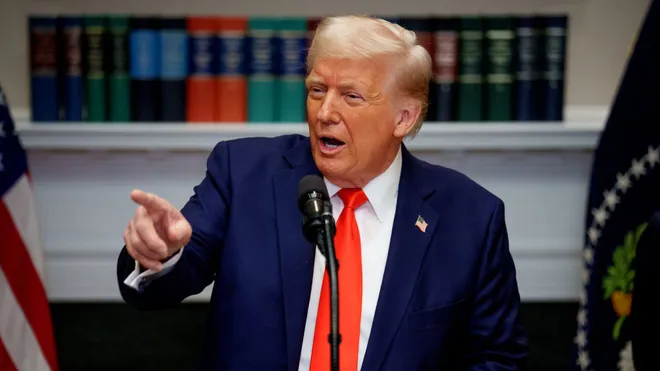Introduction:
Car prices have been on the rise since the pandemic, and now experts warn that the cost of both new and used vehicles could climb even higher. Beginning on April 2, President Donald Trump will impose a 25% tariff on imported passenger cars, light trucks, and certain automobile parts. While the tariff is designed to encourage domestic production, it is likely to have significant economic implications for both consumers and the automotive industry. The decision follows a temporary tariff exemption earlier this month at the request of major American automakers. However, this exemption is set to expire soon, and the new tariffs will further elevate car prices.
The Scope of the New Tariffs
The new tariff applies to a wide range of imported automobiles and auto parts, including key components such as transmissions and engines. These tariffs are designed to reduce the reliance on foreign-made parts and encourage U.S. manufacturing. However, the move has raised concerns about the cost burden on both consumers and the automotive industry, as prices for new and second-hand cars are expected to rise. Furthermore, while cars made under the United States-Mexico-Canada Agreement (USMCA) will only face tariffs on their foreign components, the broader impact on pricing remains substantial.
President Trump has stated that the tariffs are intended to encourage countries doing business in the U.S. to “pay for taking our jobs and wealth.” He further emphasized that the tariffs would “ignite growth like never before,” suggesting that the ultimate goal is to stimulate domestic production. However, experts warn that these measures could lead to higher prices for consumers in the short term, affecting affordability across the auto market.
Effects on Car Prices and Consumer Affordability
The imposition of the 25% tariff is expected to drive up the price of vehicles across all segments. Ivan Drury, director of insights at Edmunds, explained that the tariff is a “shotgun approach,” affecting a broad spectrum of cars and parts, making practically no vehicle unaffected. As a result, consumers will face higher purchase costs for both new and used vehicles.
The anticipated price hikes are not just confined to new car buyers; the tariffs will also increase the cost of car repairs. The automotive market is heavily reliant on foreign-made parts, and with tariffs affecting these imports, the price of repairs is likely to rise, further straining household budgets. Even vehicles built in the United States will not escape the ripple effects, as domestic car manufacturers depend on global supply chains for critical components.
Implications for Auto Manufacturers and Production
The tariffs will not only impact consumers but will also disrupt the auto industry at large. Jonathan Smoke, senior economist at Cox Automotive, warned that these tariff increases will have a profound effect on North American vehicle production. He predicted significant disruptions to supply chains, inventory shortages, and a potential decline in sales, especially in mid-April when the tariffs are set to take effect.
Manufacturers may respond in various ways: some will likely pass the full cost of the tariff on to consumers, raising prices, while others may absorb part of the cost to remain competitive. However, there is a potential downside to this strategy, as the higher prices could deter customers and slow down sales. Additionally, some car models may be eliminated as manufacturers face pressure to streamline production and reduce costs.
Related: Deepgram: Pioneering AI-Powered Speech Recognition for a Voice-Driven World
Estimating the Impact on Vehicle Prices
Economists, such as Daniel Ives of Wedbush Securities, have estimated that the tariffs could result in an increase of between $5,000 and $10,000 on the average price of a vehicle. These significant price hikes are a concern for both consumers and automakers, especially as many vehicles are already priced higher due to ongoing pandemic-related supply chain disruptions. The average price of a new car has risen by approximately 25% since early 2020, reaching over $48,000 as of February 2024.
Furthermore, the impact of the tariffs may extend beyond just the sticker price. Erin Keating, a senior analyst at Cox Automotive, highlighted that the rising interest rates have also made car loans more expensive. This adds another layer of financial strain for potential car buyers, further exacerbating the affordability crisis.

The Broader Economic Impact
The timing of these new tariffs is concerning, as car prices have already surged due to the pandemic’s effect on supply chains. Additionally, the higher costs of car ownership—such as maintenance, insurance, and financing—have already been escalating. According to a recent AAA study, the total cost of owning and maintaining a new vehicle in 2024 is approximately $1,025 per month, which is more than $200 higher than it was in 2021. This figure includes expenses like maintenance, fuel, insurance, and depreciation.
As a result, many consumers may look for alternatives, such as purchasing used cars or opting for electric or hybrid vehicles, which could offer long-term savings in maintenance costs and fuel efficiency. However, the increased costs of new vehicles and repairs are likely to make car ownership a more expensive proposition overall.
Potential Long-Term Benefits and Risks
Despite the near-term challenges posed by the tariffs, some experts believe there could be long-term benefits to domestic manufacturing. Encouraging more car production within the U.S. could strengthen the industry in the future, potentially leading to greater job creation and a more sustainable manufacturing model. Jessica Caldwell, executive director of insights at Edmunds, noted that while the immediate impact of the tariffs will likely be negative for consumers, the broader push for U.S. auto production could eventually pay off.
However, this potential benefit must be weighed against the risk of exacerbating trade tensions. Countries such as Japan, Germany, Canada, and Mexico—key automobile-exporting nations—are likely to retaliate with countermeasures, which could further destabilize supply chains and dampen economic growth. The consequences of this tariff policy will depend on how automakers, consumers, and trading partners respond over the coming months.
Conclusion: A Complex Economic Landscape
The imposition of a 25% tariff on imported foreign cars and auto parts is a bold move by the U.S. government, aimed at encouraging domestic manufacturing and reducing reliance on foreign suppliers. However, the immediate effect is likely to be an increase in the cost of vehicles, both new and used, as well as a potential disruption to supply chains and vehicle production.
The added cost burden on consumers may lead to lower demand for new vehicles, while manufacturers may need to adapt by either passing on the cost or absorbing part of it to remain competitive. The broader economic impact of these tariffs, including potential trade wars and economic slowdowns, remains uncertain.
Ultimately, while the policy could provide some long-term benefits by boosting domestic production, it could also place a significant strain on consumers and the automotive industry in the short term. As the automotive sector adjusts to these new tariffs, it remains to be seen whether the intended outcomes will be realized or whether the economic consequences will outweigh the potential gains.









